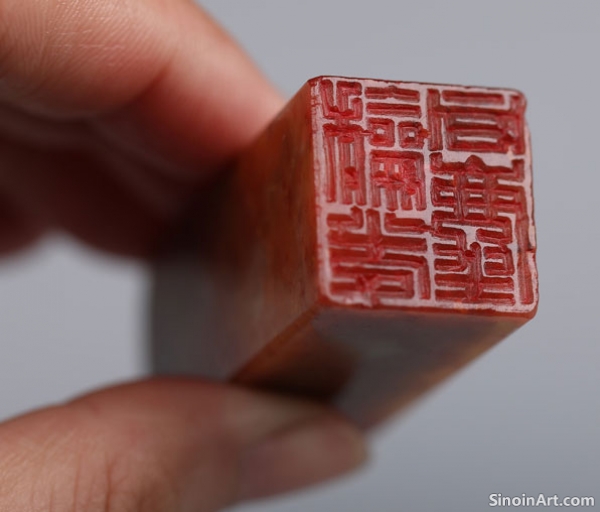Contemporary Studio Seal Carving: Blending Tradition and Innovation
|
In the modern world, the tradition of studio seal carving continues to be practiced and appreciated by artists and enthusiasts alike. Contemporary seal carvers are actively engaging with the rich history of zhāiguǎn yìnzhāng while also pushing the boundaries of the art form through new materials, techniques, and design concepts. The balance of the old and the new ensures the continued vitality of studio seal carving.  Many contemporary seal carvers remain dedicated to preserving traditional techniques, using the same tools, materials, and styles as their predecessors. This commitment to the art form’s heritage provides a foundation of understanding and technique for the current generation of artists. They strive to maintain the traditional techniques and values of the art.  Contemporary artists are also exploring new avenues for creativity, experimenting with different materials, carving methods, and designs. They may introduce new textures, patterns, or even non-traditional characters and iconography, exploring a new set of aesthetic principles. This innovation keeps the art form fresh and relevant in the modern world.  The use of digital technology has also begun to influence contemporary studio seal carving, with some artists using digital tools to plan designs or create computer-aided carvings. The digital age has also made the communication, and the teaching of the art much more accessible. Despite the changes, the core principles of studio seal carving remain the same: the expression of intellectual, artistic, and personal identity through the art form. Contemporary artists work to maintain the traditional values of the art, while innovating and adapting to new tools and styles. Contemporary studio seal carvers represent a vibrant continuation of a long and storied artistic tradition. By embracing both tradition and innovation, they ensure that studio seals remain a meaningful and powerful form of artistic expression in the modern era. The blending of old and new ideas ensures the continued relevance of the art form. |
Tag : Contemporary Studio Seals, Modern Zhaiguan Art, Seal Carving Trends, Artistic Innovation, Seal Today
Related information
- Collecting Collector's Seals: A Journey Through Art History and Connoisseurship
- Collector's Seals vs. Other Seal Types: Purpose and Usage
- Famous Seal Carvers and Their Legacy: Masters of Zhuanke
- Learning Seal Carving: A Journey of Patience and Skill
- The Art of the Seal: An Introduction to Chinese Seal Carving
This article explores the personal journey of those who collect collector’s seals, emphasizing the blend of artistic appreciation, historical research, and personal engagement with Chinese art and culture.
This article compares and contrasts collector's seals with other types of Chinese seals, such as name seals, studio seals, and leisure seals, highlighting their unique functions and distinctive features.
This article highlights some of the most influential seal carvers in Chinese history, discussing their distinctive styles, techniques, and the lasting impact they had on the art of zhuanke.
This article provides an overview of the different avenues for aspiring seal carvers, including private instruction, formal education, online resources, and the importance of consistent practice.
This article introduces Chinese seal carving, or Zhuanke, as a traditional art form combining calligraphy, carving, and design, highlighting its history, process, and cultural significance.